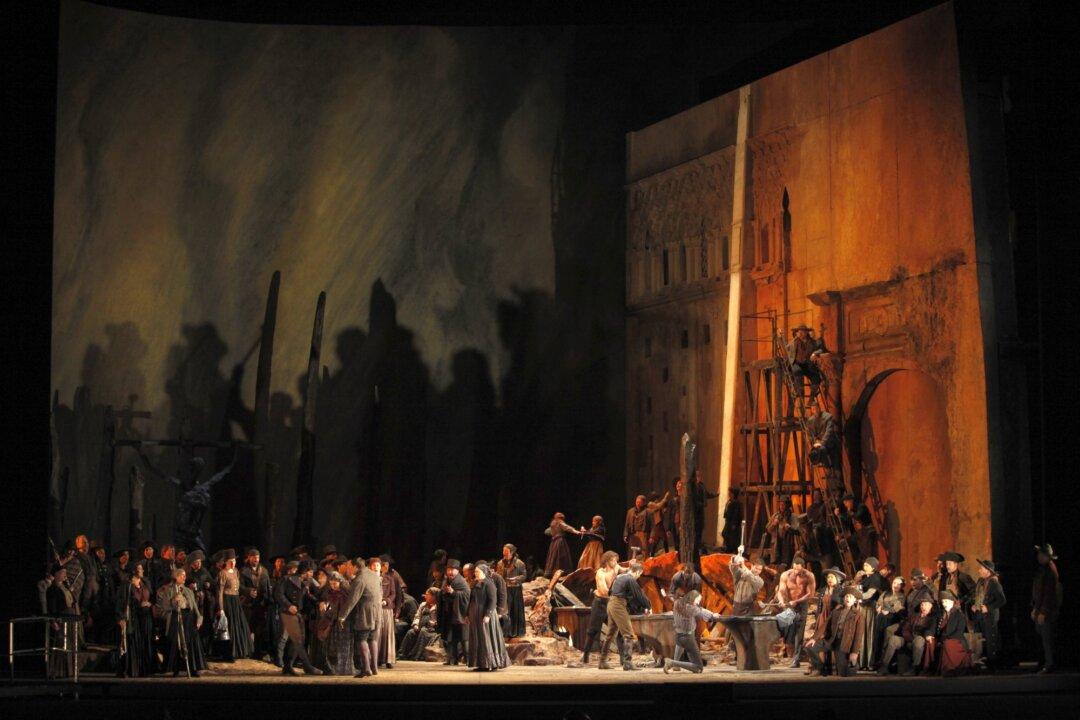NEW YORK—“Il Trovatore” is one of those operas where great music prevails over a ridiculous plot. The Marx Brothers highlighted and heightened the absurdity in “A Night at the Opera.” This season, the Metropolitan Opera is demonstrating that Verdi’s opera is as potent as ever when the production has a top-flight cast; this one led by superstar Anna Netrebko.
The action takes place during the Spanish Civil War of the 15th century. Sir David McVicar, who originally staged the production in 2009, moved the events to the 19th century.

Yonghoon Lee as Manrico and Anna Netrebko as Leonora in Verdi's "Il Trovatore." Marty Sohl/Metropolitan Opera






